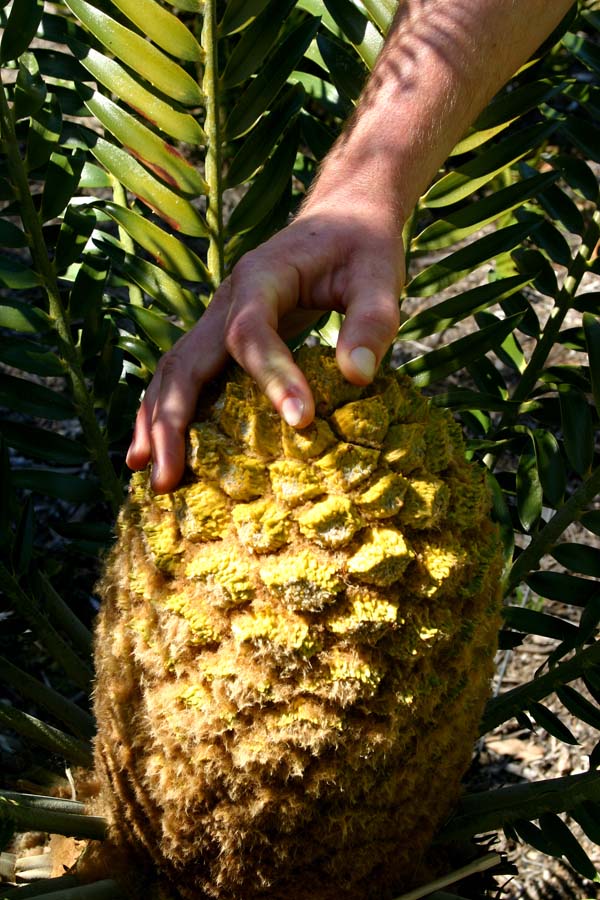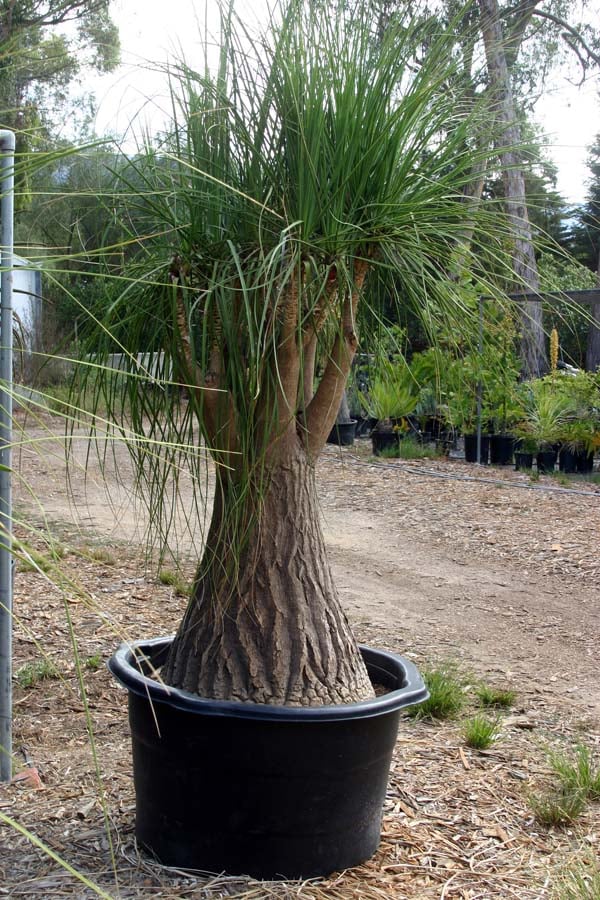
Rare Plants on the Auction Block at Lotusland

Contributor
[sidebar] More specimens of the three rare and interesting plants featured in this story will be offered September 21 during the second annual Exceptional Plants: Lotusland Auction and Sale. For more details about the event visit www.lotusland.org.[/sidebar]
In 2012, Lotusland held its first ever plant auction. Given Lotusland’s extraordinary plant collections, it is fitting that this inaugural plant sale featured rare, unusual, and very special plants. It also gathered together some of Southern California’s most knowledgeable plant and garden design experts. Many of the plants in the auction were propagated from Lotusland’s plants; reproduction of plants in the collection for distribution and replacement in the garden is an ongoing activity. Some of the rare and exceptional plants that were featured in the auction have interesting stories. Here are some of those stories.

Palms were some of the early exotic plants introduced to Santa Barbara and are some of the oldest plants in the collections at Lotusland, dating to Ralph Kinton Stevens’ time. Stevens and the renowned Italian horticulturist Francesco Franceschi introduced many palms to Santa Barbara including a species of Mexican fan palm (Brahea nitida) that is still relatively uncommon in cultivation. The one mature specimen of this plant at Lotusland is believed to be one of the largest in the United States. The retired Director of the Huntington Botanical Gardens, Myron Kimnach, writes, “I identified two old palms—one at Lotusland and one at the Gillespie estate in Montecito—as B. nitida, and they probably were from Franceschi’s nursery. I don’t know of any older B. nitidas in the United States.” Lotusland staff regularly collect seed to grow a new generation of this beautiful palm.

Growing on steep cliffs in the mountainous grasslands of the border region of South Africa and Swaziland is a cycad with a tenuous hold on survival—Encephalartos heenanii. This cycad has a very limited distribution, and habitat degradation and over-collecting have taken a toll on the species. It may now be more numerous in gardens than in the wild. Plants such as E. heenanii find refuge at Lotusland, which acts as an insurance policy against extinction. At the end of 2010, to the excitement of Lotusland staff, a female E. heenanii developed a cone. Pollen of the same species was acquired from Loran Whitelock (cycad collector and source of many of Madame Walska’s original cycads) and the cone was pollinated multiple times in early March 2011. The seed was harvested and cleaned on September 16, 2011. According to Whitelock, this is the first time seed of this species of cycad has been produced in the United States. Seeds were sown on January 27, 2012 and the first germinated on February 20. After spirited bidding, one lucky live auction bidder won the privilege, for $1,000, to grow this exceedingly rare plant in his collection. The remaining plants will be held for future planting and propagation and distributed to other botanical institutions, helping to further insure the continuing existence of this species.

One plant family that is closely related to the agaves has several bizarre species with grass-like foliage and swollen stems, which botanists refer to as a caudex. Calibanus hookeri, one of only two species in its genus, grows in the southern part of the Chihuahuan desert in north central Mexico. Its caudices can reach truly monumental proportions rivaling the profile of a “Volkswagon Beetle,” according to Charlie Glass, who was among a party of botanists to rediscover this species in the 1960s before coming to work at Lotusland in 1972. Beaucarnea recurvata, known as the ponytail palm, has an enlarged base many feet in diameter, but also makes a significant trunk that can reach 20 feet in height. Both of these species are dioecious, meaning the pollen-producing flowers (male) occur on separate plants from the seed-bearing plants (female). In Mexico, these two species would never have the chance to mate as they occur hundreds of miles apart, but at Lotusland a female Calibanus that was planted by Glass was apparently close enough to a male Beaucarnea to achieve a fertile union. Seed collected from the Calibanus was sown and the resulting seedlings showed abnormalities that suggested they were not the pure species. A few of the resulting plants were planted in the cycad garden where they have grown for more than 25 years. The plants have greater base diameters than any Beaucarnea, and have formed short trunks with multiple branches. As the cycad collection grew, Lotusland staff dug up some of these interesting hybrids to make room and one of them was potted up for sale at last year’s auction.
Share:
Social Media
Garden Futurist Podcast
Most Popular
Videos
Topics
Related Posts

Ground Up Science for Greener Cities with Garden Futurist Dr. Alessandro Ossola
Spring 2023 Listen to the Podcast here. Alessandro Ossola is a scientist who gets very excited about the challenge of climate change allowing for an

Readying Urban Forests for Climate Realities with Garden Futurist Dr. Greg McPherson
Winter 2023 Listen to the Podcast here. “Going from the mow and blow to a more horticulturally knowledgeable approach to maintaining the landscape. And that

Low Maintenance Gardens – Better for Pollinators and People
Autumn 2022 “I come out every day. It’s therapy, my meditation.” Janet’s young garden transformed from overgrown, invasive plants to mostly natives. The dailiness of

Invasive Plants Are Still Being Sold: Preventing Noxious Weeds in Your Landscape
Autumn 2022 With so many beautiful ornamental plant species and cultivars throughout California and the Pacific Northwest, how do you decide which ones to include











Responses